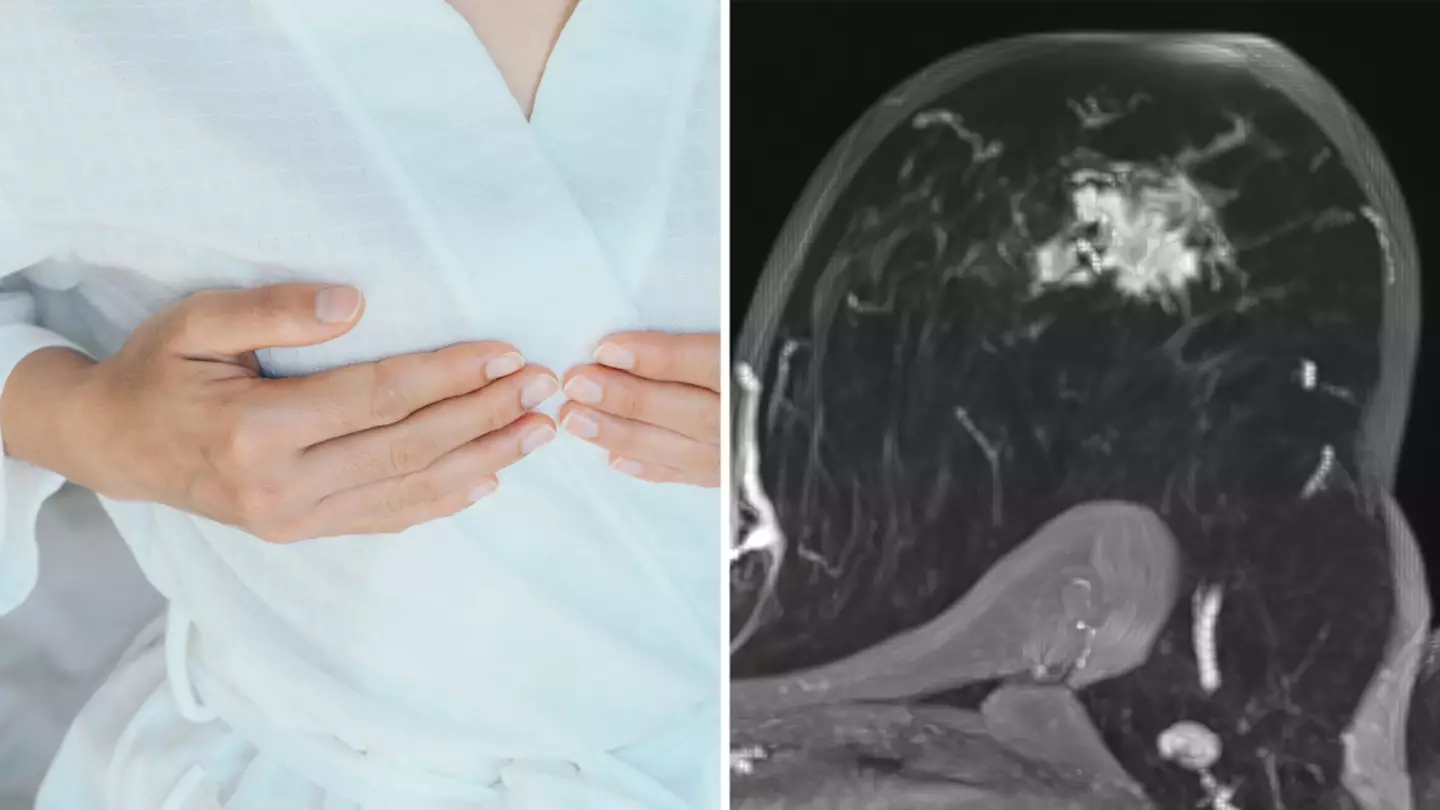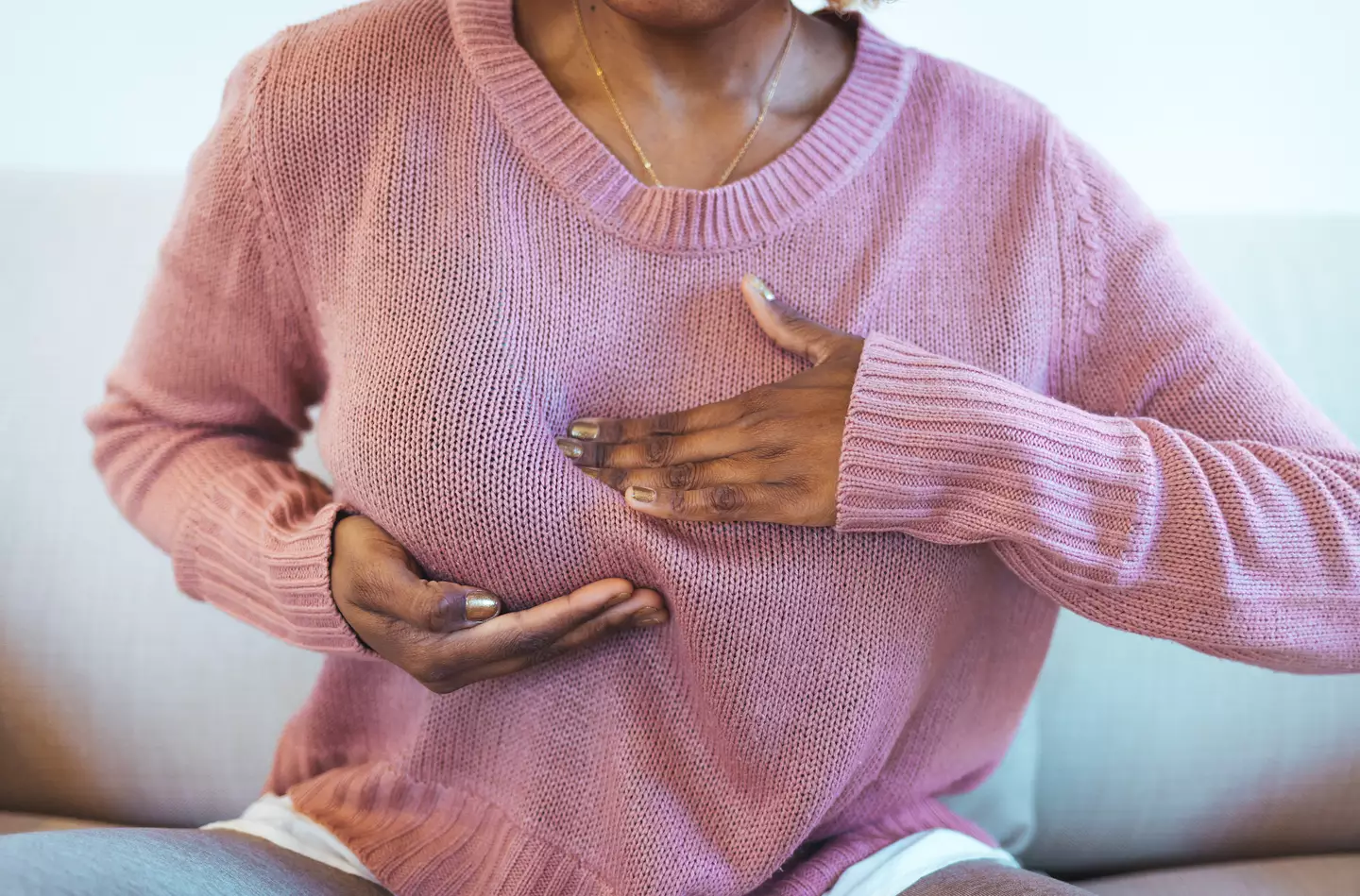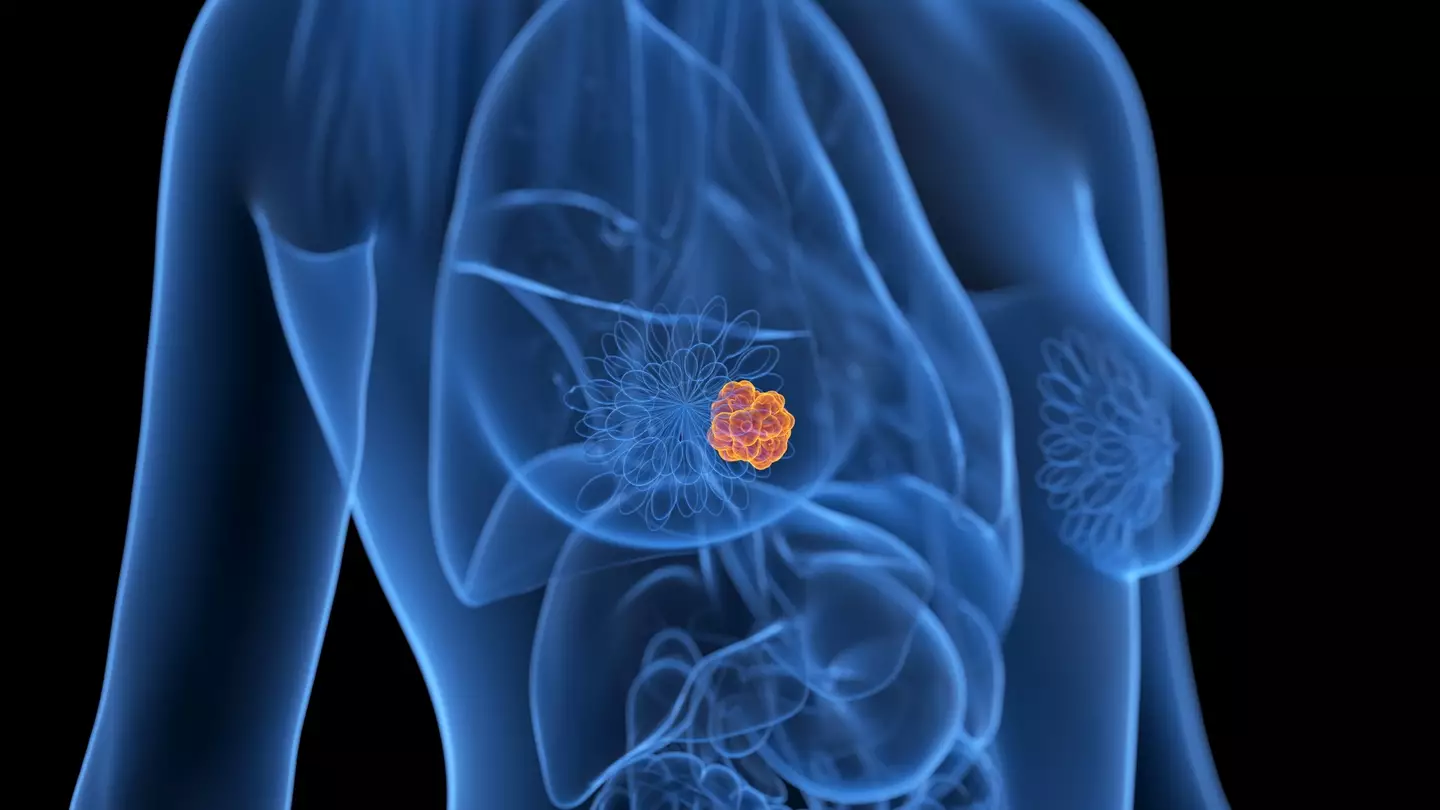
With breast cancer cases reportedly on the rise - especially in younger women - doctors and medics all over the world are once again issuing vital warnings of the seven 'silent killer' warning signs of the disease.
Here, we hope to give readers across the globe - particular women and girls - the encouragement they need to seek out a GP if they suspect they may be battling the early signs of breast cancer.

1) An increase in breast size
In many breast cancer cases, patients report visible changes to the size of one of their breasts - often 2-3 times the size of the other.
According to Dr Arthy Yoga - a breast surgical oncologist at Houston Methodist - a breast appearing larger, heavier or fuller could mean that cancer is present.
Advert
She added that, alternatively, a breast sitting firmer, tighter or higher than before can indicate cancer growing diffusely.
"Similar to how a breast mass growing under the skin causes a dimple or divot, diffuse growth pulls the entire skin of the breast inward," the cancer specialist continued.
"If a diffuse cancer is growing and blocks the lymphatics of the breast, lymph cannot drain and this fluid can build up and cause enlargement of the breast."
It's important to note that, in most women, one breast is slightly larger than the other.
Advert
Getting to know the size and shape of your breasts prior to a diagnosis can help make it easier to notice any changes.

2) Redness, rash or blotchiness around the breast
The appearance of breast cancer can hugely vary depending on the patient.
Advert
Whilst one individual might report a blotch appearing on the breast which is reminiscent of a mosquito bite, others might report enduring a colossal rash spreading across either one or both breasts.
And whilst other conditions - such as Mastitis - can cause colour change in the breast area, Wendy Woodward M.D. of the Anderson Cancer Centre says it is the speed at which a rash develops, or the skin changes, that can indicate the presence of cancer.
3) Pain/soreness
According to the National Breast Cancer Foundation, though it's rare for a tumour in the breast to cause pain, many patients report an increased amount of sensitivity in this area.
Advert
In many cases, this sensation is caused by a different ailment entirely - including menstrual changes, hormone adjustments or a pulled muscle.
That said, however, any newness in this area should always be reported.

4) A lump, thickening or dimpling or the skin
Whilst breast tissue often feels covered with unusual lumps and bumps, changes to the skin's consistency and texture could indicate breast cancer.
Advert
The majority of cases recorded in the UK allege that the patient caught wind of the disease by noticing a lump growing in their breast or armpit.
This could be a round and firm lump, or a softer sensation that is easily to move around under the skin.
The latter could also have irregular edges.
Skin dimpling to the extent that it resembles the consistency of an orange could also be a sign of cancer, as could a sudden change in the colour of thickness of the breast's tissue.
5) Warmth of tenderness of the breast
Inflammatory breast cancer - a rare and aggressive form of the disease, which accounts for 1 in 5 cases and sees cells block lymph vessels in the skin of the breast - often sees patients reporting a sudden or sporadic feeling of heat in the chest region.
These cases often involve the breast also becoming more tender to the touch and generally inflamed.

6) Lymph node in the armpit
As we mentioned earlier, lumps in breast cancer cases aren't always found in the breast itself, and are sometimes noticed in the underarm area instead.
Lymph nodes are part of the lymphatic system that drains waste products from the body, and could be at risk of contracting cancer from other areas of the body.
It can also spread to lymph nodes in the collar bone or breast bone area.
7) Nipple discharge
Many breast cancer survivors recall nipple discharge being amongst the first signs they observed that something was wrong.
This could either appear bloody in colour, or a more worrisome milky/green or clear.
Leaking from the breast area in this way usually happens on its own, but in more concerning cases, the release is increased when the breast is squeezed.